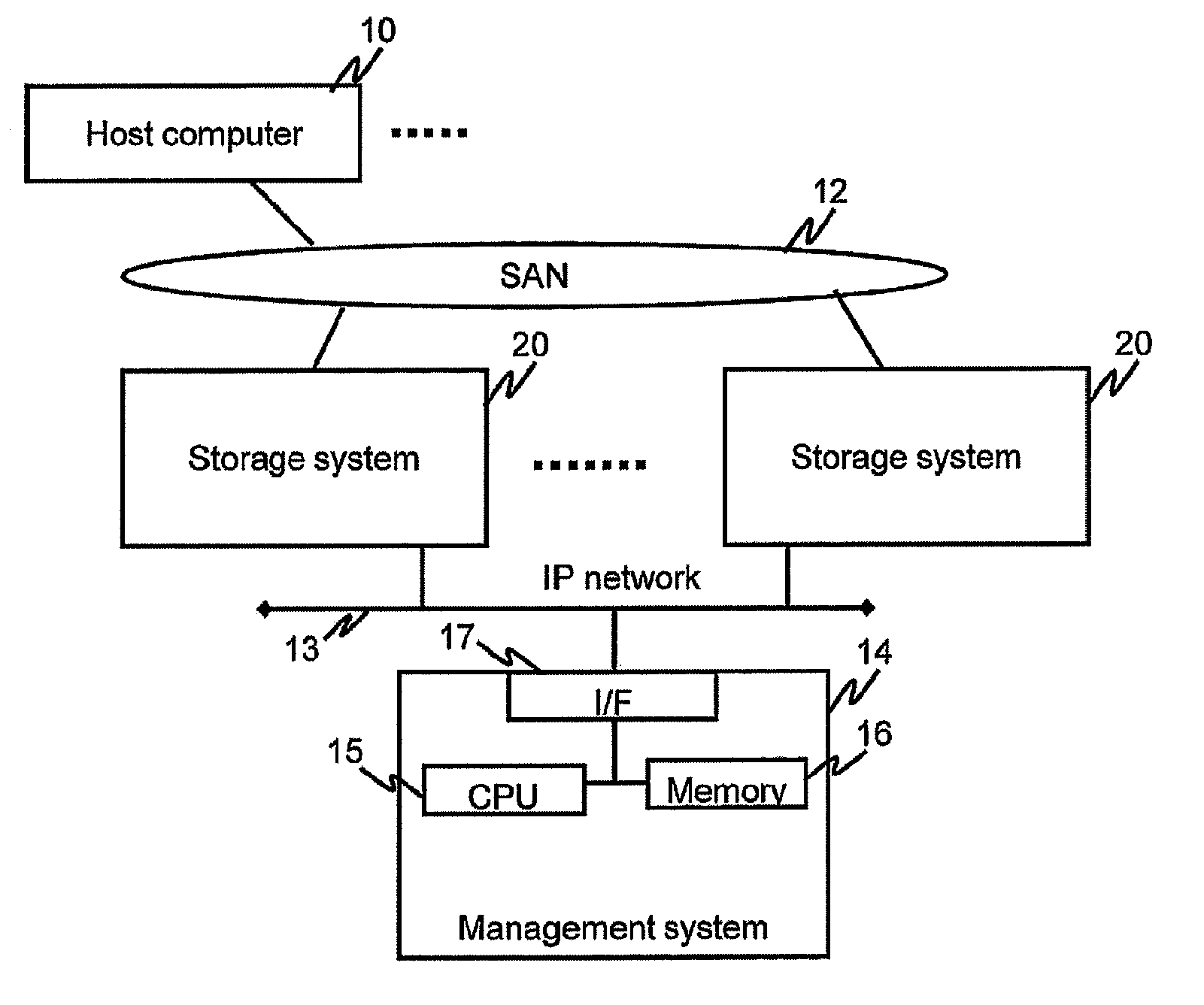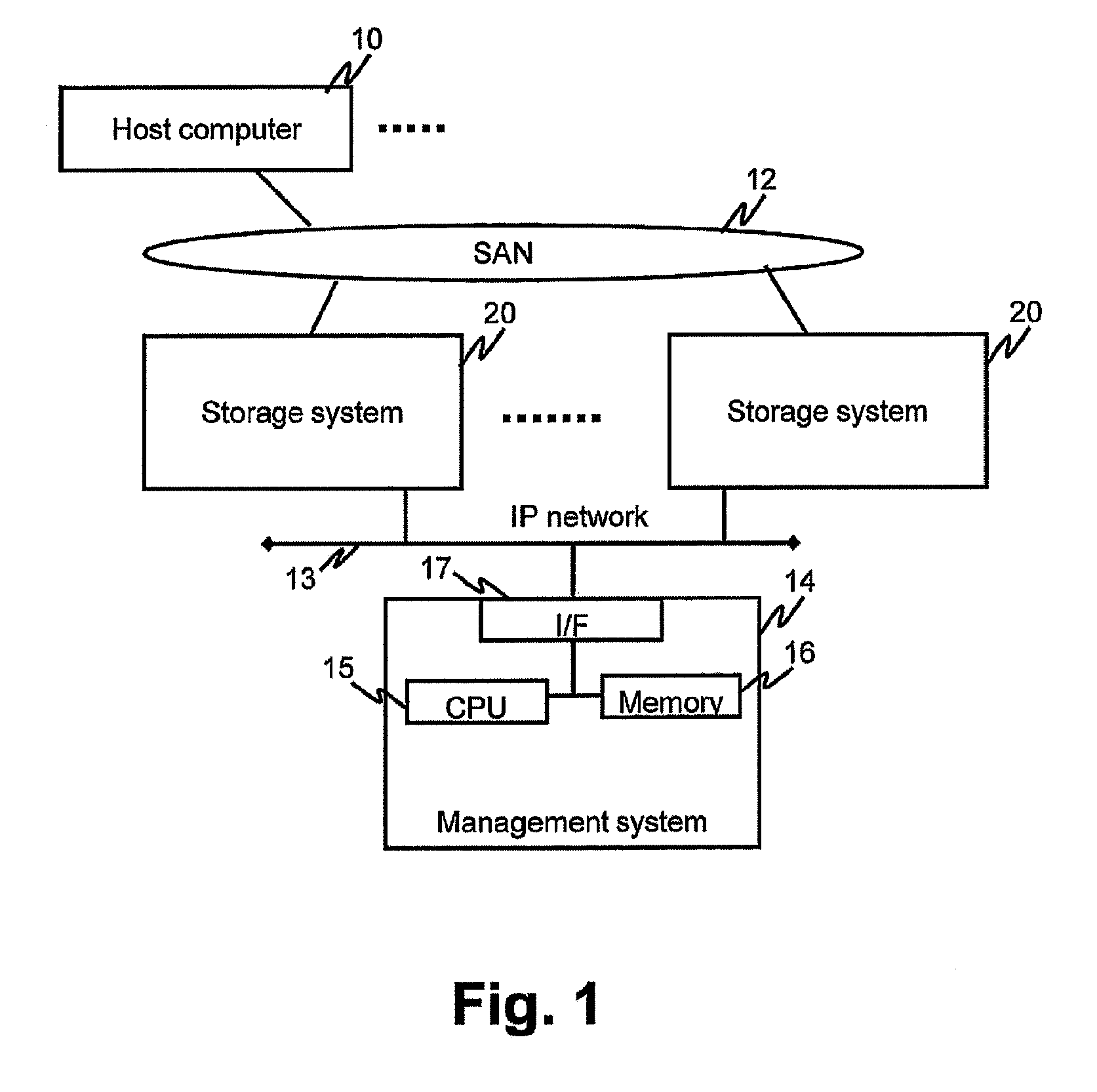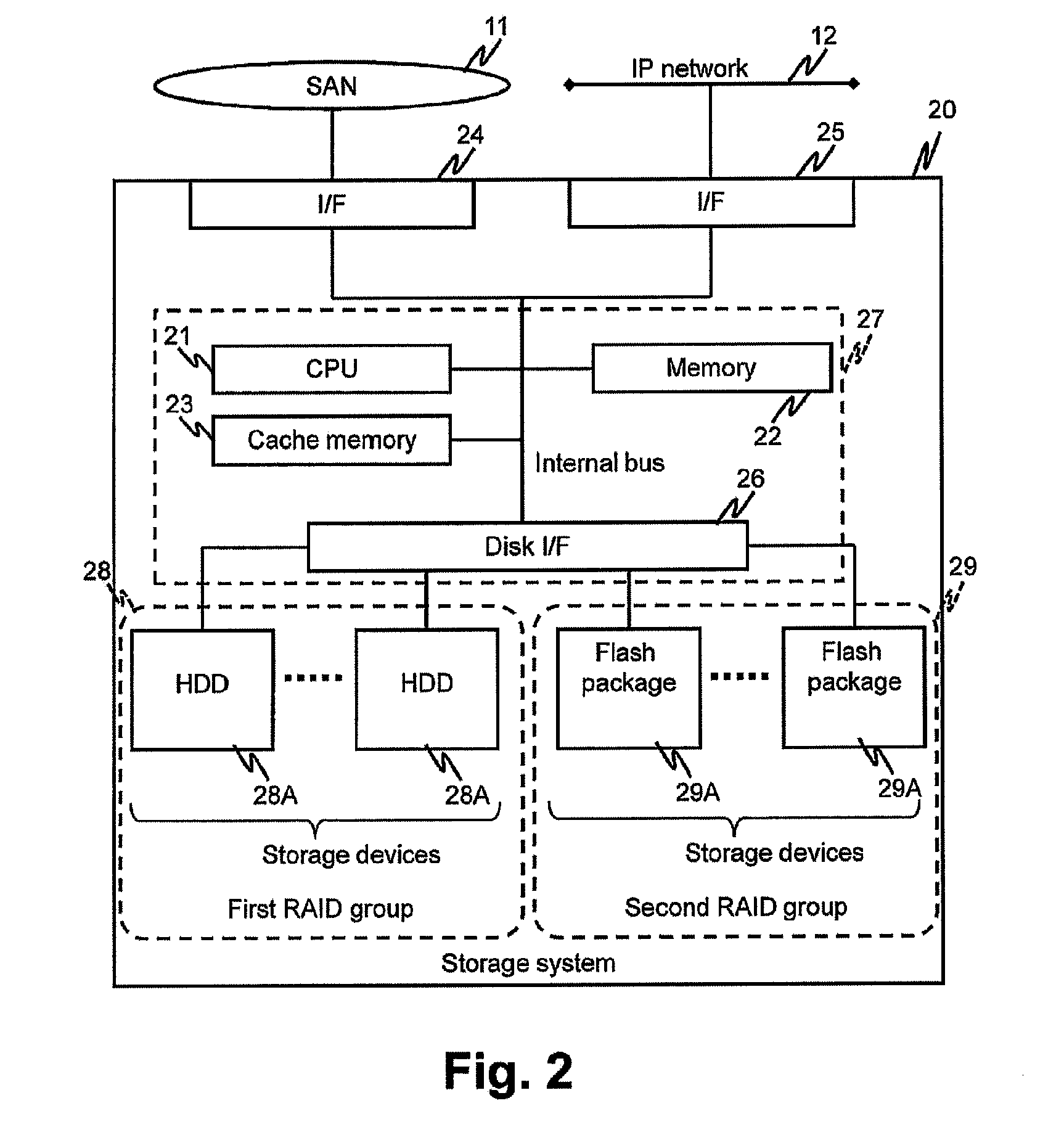Remote copy system and remote copy control method
- Summary
- Abstract
- Description
- Claims
- Application Information
AI Technical Summary
Benefits of technology
Problems solved by technology
Method used
Image
Examples
example 1
[0059]FIG. 1 shows an example of the configuration of a computer system related to Example 1.
[0060]The computer system comprises a host computer 10 and a remote copy system. The remote copy system comprises a management system 14 and multiple storage systems 20. The host computer 10 and the respective storage systems 20 are coupled by way of a first communication network, for example a SAN (Storage Area Network) 12. The respective storage systems 20 and the management system 14 are coupled by way of a second communication network, for example, an IP network (a communication network in which communications are performed in accordance with IP (Internet Protocol)) 13.
[0061]The management system 14 comprises a communication interface device 17, a storage device, and a control device coupled thereto. The communication interface device 17 is denoted as “I / F”. The storage device, for example, is a memory 16. The control device, for example, is a CPU (Central Processing Unit) 15. The manage...
example 2
[0234]Example 2 will be explained hereinbelow. In so doing, the explanation will focus on the points of difference with Example 1, and explanations of the points in common with Example 1 will be either simplified or omitted.
[0235]FIG. 28 shows an overview of the processing of a remote copy system related to Example 2.
[0236]In Example 2, data transferred from the RAID group constituting the basis of the first VOL to the RAID group constituting the basis of the second VOL is routed through a third VOL. In this example, the RAID group constituting the basis of the first VOL of a first storage system 281 does not comprise a compression / decompression unit. Therefore, data is transferred from the first VOL to the second VOL as-is without being compressed.
[0237]Consequently, in this example, a third VOL, which is based on a RAID group comprising a compression / decompression unit, becomes the relay point of this data in order to reduce the amount of data, which is transferred to the second s...
example 3
[0278]Example 3 will be explained below. In so doing, the explanation will focus on the points of difference with Example 1, and explanations of the points in common with Example 1 will be simplified or omitted. Furthermore, Example 3 can also be applied to Example 2.
[0279]FIG. 32 shows an overview of a remote copy system related to Example 3.
[0280]In Example 3, compressed data, which is to be transferred from a first VOL (transfer source) to a second VOL (transfer destination), is temporarily stored in a third VOL (storage destination), and thereafter, the compressed data is sent from the third VOL to the RAID group constituting the basis of the second VOL. Specifically, for example, the compressed data is transferred to the third VOL from the respective flash packages 29A, 29B, and 29C, which constitute the basis of the first VOL.
[0281]In Example 3, the compressed data may be stored in a storage device in the RAID group constituting the basis of the third VOL without actually goin...
PUM
 Login to View More
Login to View More Abstract
Description
Claims
Application Information
 Login to View More
Login to View More - R&D
- Intellectual Property
- Life Sciences
- Materials
- Tech Scout
- Unparalleled Data Quality
- Higher Quality Content
- 60% Fewer Hallucinations
Browse by: Latest US Patents, China's latest patents, Technical Efficacy Thesaurus, Application Domain, Technology Topic, Popular Technical Reports.
© 2025 PatSnap. All rights reserved.Legal|Privacy policy|Modern Slavery Act Transparency Statement|Sitemap|About US| Contact US: help@patsnap.com



